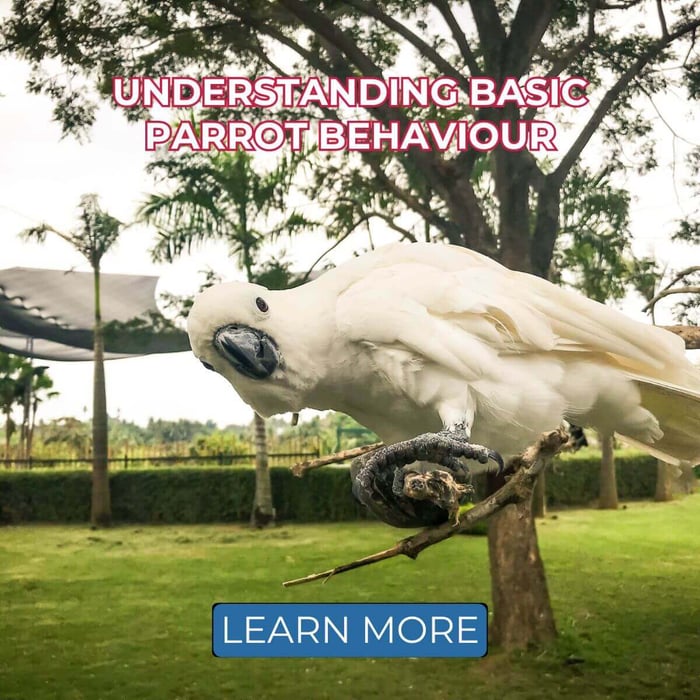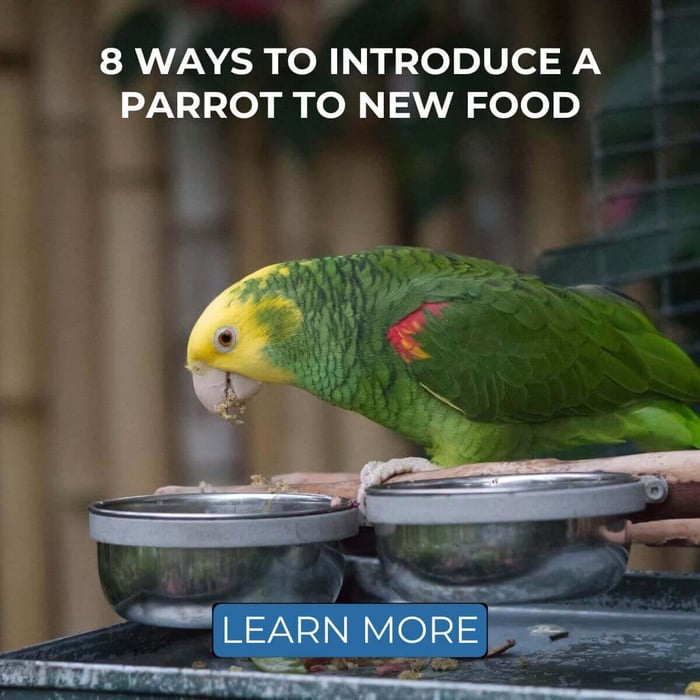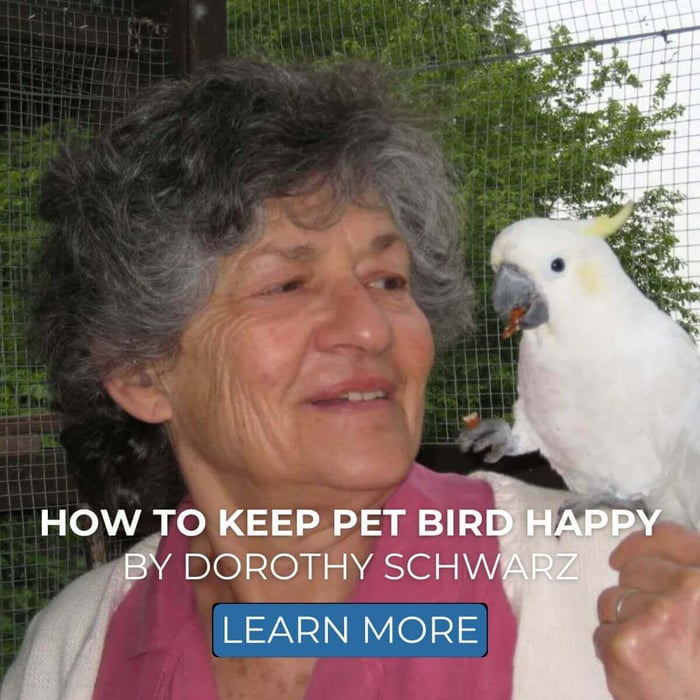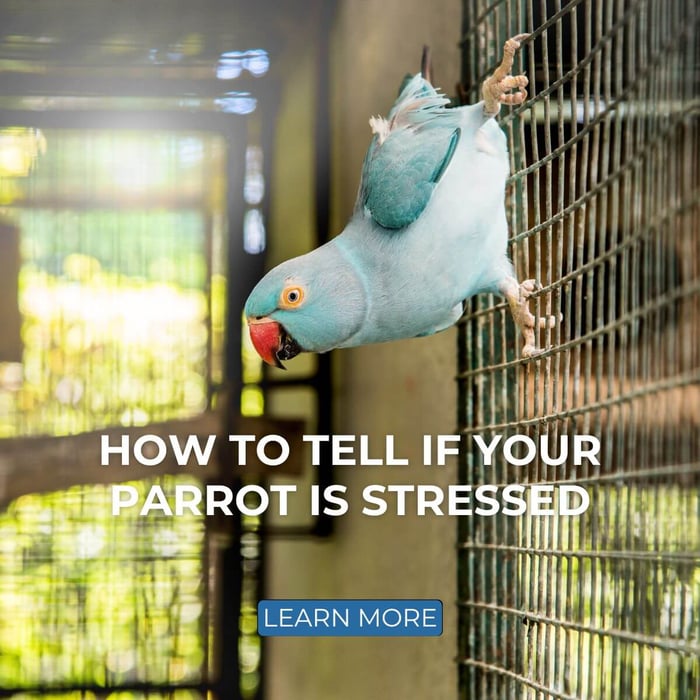How To Get A Bird Back In Its Cage - 4 Top Tips
Unless you keep it in a large aviary, it’s important to let your parrot or other bird out of its cage for at least a few hours daily. It’s a form of enrichment and allows the two of you to socialise. Extra exercise is a great tool for preventing obesity. But what if your bird doesn’t want to go back in afterwards? Let’s have a look at our 4 top tips on how to get a bird back in its cage if it won’t step up or go by itself!
How To Get A Bird Back In Its Cage: Our #1 Trick
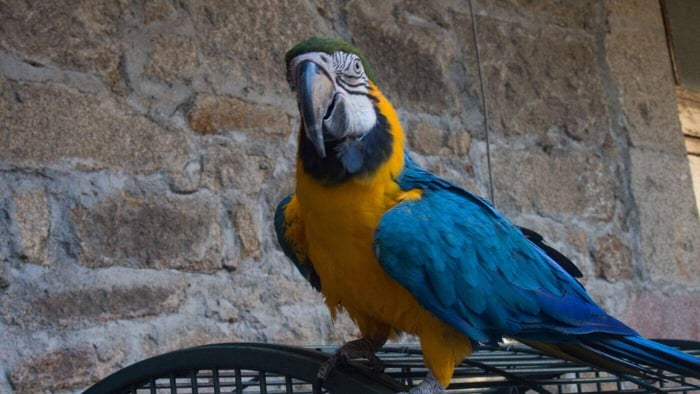
Whenever you’re trying to train your bird to do anything, the first thing you’ll want to think of is food. How can you use a bird’s love for seeds, pellets and other snacks to your advantage?
Our favourite trick to get our birds back in their cages uses parrot food & treats. It’s perfect for those among our feathered friends who aren’t inclined to head back in on their own and don’t want to step up to let you transport them. No bites, no forcing, just letting your bird decide by itself that it wants to go. It just takes a little time to teach.
It Works A Little Like This:
- Leave your new bird in its cage for around a week to get used to its surroundings. During this time, make sure you shake the food container every time you feed to create an association between the sound and the food.
- Prepare: set up a play area on top of the cage and bird-proof the room. It helps to choose a smaller room for now.
- Let your bird out of its cage on a day when you won’t be leaving the house and have time.
- Don’t feed or provide water except inside the cage. Leave the door open. Your bird may actually find its way back in by itself once it gets hungry or thirsty.
- If your bird doesn’t return on its own, shake the food container and be very obvious about placing some food in its bowl. In many cases, because it recognises the sound, that’ll do the trick. Once it goes in to eat, just close the door behind it.
- If the cage is portable and your bird is in a spot that allows it, you can place the cage close to it and make sure the food is in a visible location. If it’s on top of its playground, you may be able to pick the whole thing up and bring it close to the cage door. Once the bird spots the food, it may hop in.
I’ve personally tried this with cockatiels, budgies and lovebirds. After a few repetitions, they positively made it back to the cage once they saw me reaching towards the food. It’s actually quite comical! They don’t seem to mind at all that I close the door behind them.
How To Get A Bird Back In Its Cage: Other Things To Try
2. Step Up & Stay Training
Any parrot or other bird should be trained to step up. It’s the most basic and handiest thing you can teach them! Stay is also a great command, which you can use so it doesn’t fly away while you bring it to its cage.
Make sure you put a high-value treat in your bird’s food bowl before you go to get it to put it in its cage. Have it step up and make it stay using some tasty, healthy parrot treats, if need be, while you transport it. Then, just place it straight in front of its food bowl to enjoy its well-deserved treat. It’ll learn soon enough that food is incoming when you approach the cage and might begin flying to it by itself.
Tip: Some bird owners swear by backing their parrot into the cage rather than putting it in headfirst. It makes it more difficult for them to grab onto the bars in an attempt to abort the mission and climb back up.
3. Darken The Room
Some bird enthusiasts report having good success getting their feathered friend back in its cage by darkening the room. Close the curtains and turn off all lights except a single one next to the cage. This signals that it’s time to go to sleep but still allows your bird to find its way back “home”.
Give it a try! Some birds decide to just go to sleep on the spot, but you can make returning to the cage more enticing by giving the food container a good shake and being obvious about filling the food bowl.
4. Emergencies
What should you do if you really need to get your bird to go in a travel carrier or bird cage, like if it urgently needs to go to the vet? There is a good way, but you need to keep in mind that this is a last resort. It can damage the trust between you and your bird, possibly making things more difficult next time.
Our avian vet showed us how she catches a bird effectively if need be by darkening the room, taking a towel, and just throwing that over the subject. After that, you can very carefully locate it under the towel and pick it up to put it in its cage or carrier. Take care not to damage its fragile wings or let it escape! It can help to wear gloves for this, because it will more than likely elicit a bite response.
What Not To Do
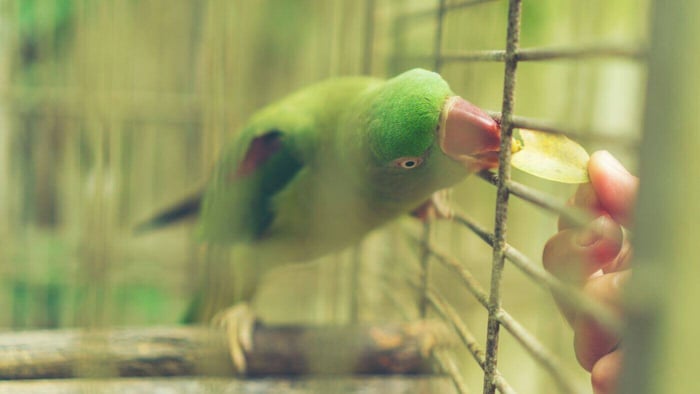
Keep in mind while trying to accomplish anything with a parrot or other bird, including putting it back in its cage, that you should never force them to do anything. No grabbing ever, please, unless it’s a genuine emergency. It can really damage your bond and cause long-term fear of hands or humans in general. It’ll only make things more difficult next time.
We also recommend against the idea of clipping your bird’s wings to get it back in its cage. It’s a form of forcing it that can cause severe frustration. As a result, the bird may become fearful and even bitey. You can accomplish putting it back in without seriously handicapping it like this!
Conclusion
If you’re left wondering how to get a bird back in its cage after a bunch of failed attempts, don’t despair. It can be done: you and your feathered friend just need some time and practice. It’ll learn soon enough that its cage is a safe place that contains food.

